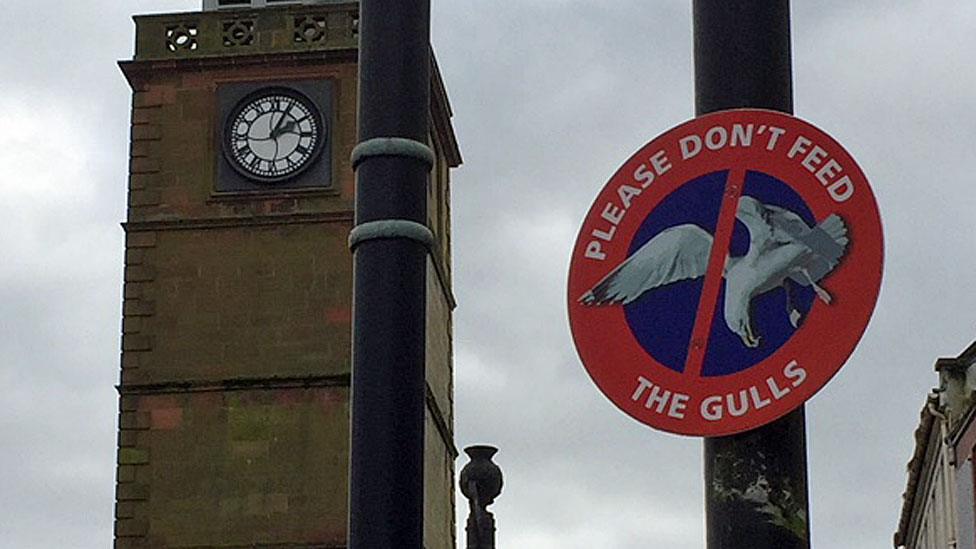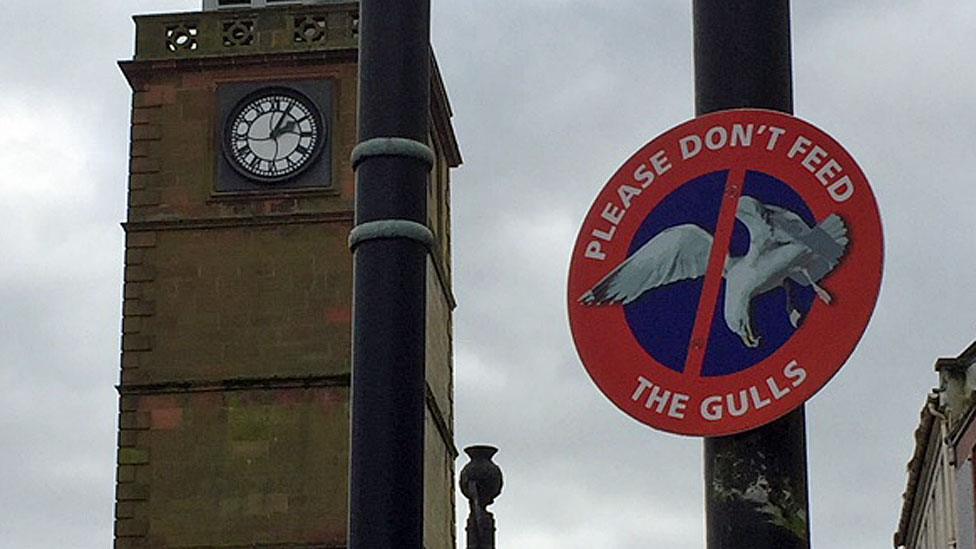Dumfries seagull trap and kill plan 'a last resort'
- Published

A seagull egg and nest removal scheme started in Dumfries in 2009
A council is considering trapping and killing adult birds as a "last resort" in efforts to tackle urban gull issues.
Dumfries hosted a national summit on the problem in 2008 and began an egg and nest removal scheme a year later.
A report said that despite some successes the number of nesting pairs in the town had actually increased from 618 in 2010 to 660 last year.
It has recommended considering "alternative measures" such as trapping adult birds to help reduce the numbers.
Dumfries is one of a number of towns across the UK with long-standing issues with gulls.
They include birds stealing food from people's hands, dive-bombing to protect chicks, ripping open rubbish bags as well as noise and mess problems.
A report to Dumfries and Galloway Council said its nest and egg removal scheme had gathered "vital information" which had been shared with scientists and other local authorities.
However, it recommended considering the use of traps and "any other measures allowed" under a general licence to remove or reduce gull numbers.

Signs in Dumfries town centre were put up to discourage people feeding birds
"As a last resort, in situations of public/contractor safety or when the financial cost of using egg and nest removal is excessive there will be occasions where it is necessary for a gull or gulls to be tackled through other measures," said a council statement.
"This could be trapping followed by humane dispatch or dispatching in the environment both under the guidance of partnership agencies and in accordance with the requirements of the general licence."
Meanwhile, the egg and nest removal scheme would be continued for another year.
Experts said that the scheme had been successful in efforts to "reduce conflict" between gulls and residents but not in excluding nesting birds from the town centre.
Roof spikes
They said a management system remained necessary to avoid a rapid increase in numbers.
In addition to nest removal, a range of other ways of tackling the problem have been used.
Last year spikes were attached to the roofs of nearly 100 domestic properties while in 2017 new signs were put up to discourage people from feeding the birds.
Work is set to continue to help reduce access to food sources with "bird proof bins" recommended to be used when replacing any older ones.
- Published14 March 2018
